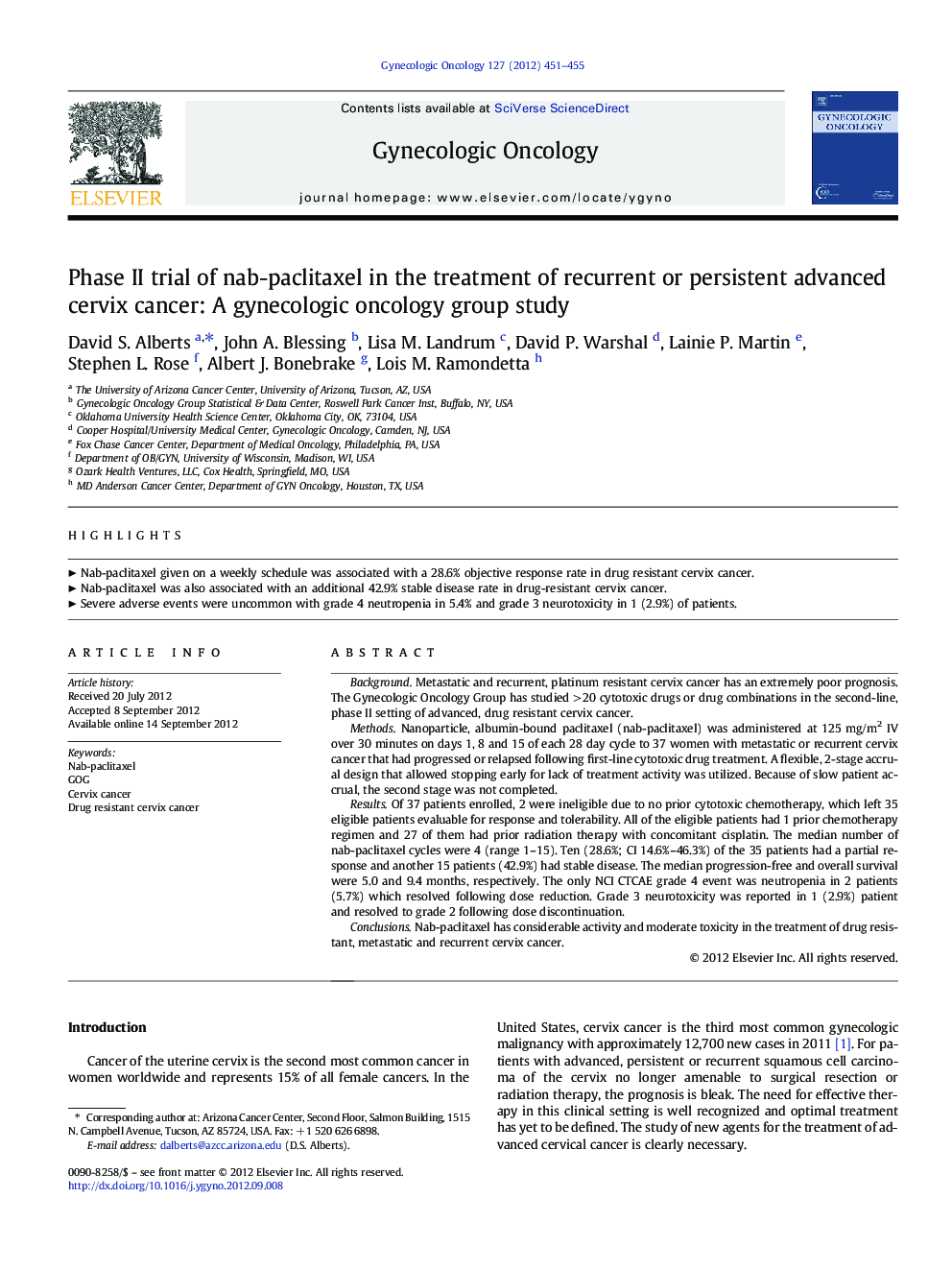| Article ID | Journal | Published Year | Pages | File Type |
|---|---|---|---|---|
| 6184588 | Gynecologic Oncology | 2012 | 5 Pages |
BackgroundMetastatic and recurrent, platinum resistant cervix cancer has an extremely poor prognosis. The Gynecologic Oncology Group has studied > 20 cytotoxic drugs or drug combinations in the second-line, phase II setting of advanced, drug resistant cervix cancer.MethodsNanoparticle, albumin-bound paclitaxel (nab-paclitaxel) was administered at 125 mg/m2 IV over 30 minutes on days 1, 8 and 15 of each 28 day cycle to 37 women with metastatic or recurrent cervix cancer that had progressed or relapsed following first-line cytotoxic drug treatment. A flexible, 2-stage accrual design that allowed stopping early for lack of treatment activity was utilized. Because of slow patient accrual, the second stage was not completed.ResultsOf 37 patients enrolled, 2 were ineligible due to no prior cytotoxic chemotherapy, which left 35 eligible patients evaluable for response and tolerability. All of the eligible patients had 1 prior chemotherapy regimen and 27 of them had prior radiation therapy with concomitant cisplatin. The median number of nab-paclitaxel cycles were 4 (range 1-15). Ten (28.6%; CI 14.6%-46.3%) of the 35 patients had a partial response and another 15 patients (42.9%) had stable disease. The median progression-free and overall survival were 5.0 and 9.4 months, respectively. The only NCI CTCAE grade 4 event was neutropenia in 2 patients (5.7%) which resolved following dose reduction. Grade 3 neurotoxicity was reported in 1 (2.9%) patient and resolved to grade 2 following dose discontinuation.ConclusionsNab-paclitaxel has considerable activity and moderate toxicity in the treatment of drug resistant, metastatic and recurrent cervix cancer.
⺠Nab-paclitaxel given on a weekly schedule was associated with a 28.6% objective response rate in drug resistant cervix cancer. ⺠Nab-paclitaxel was also associated with an additional 42.9% stable disease rate in drug-resistant cervix cancer. ⺠Severe adverse events were uncommon with grade 4 neutropenia in 5.4% and grade 3 neurotoxicity in 1 (2.9%) of patients.
